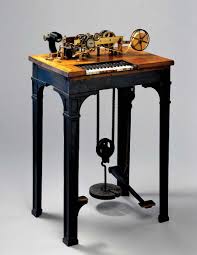Stamp: Coat of Arms (Orange Free State 1888)
Coat of Arms (Orange Free State 1888)
01 April (Orange Free State ) within release Telegraphs - "TF" overprints goes into circulation Stamp Coat of Arms face value 1 South African shilling
| Stamp Coat of Arms in catalogues | |
|---|---|
| Stanley Gibbons: | Sg: ZA-OR T12 |
Stamp is horizontal format.
8s Revenue stamp of 1877 surcharged "T F Een Shilling." and bar in black - large "T F" (6.6 x 3.4mm)Also in the issue Telegraphs - "TF" overprints:
- Stamp - Coat of Arms face value 1;
- Stamp - Coat of Arms face value 1;
- Stamp - Coat of Arms face value 1;
- Stamp - Coat of Arms face value 1;
- Stamp - Coat of Arms face value 1;
Stamp Coat of Arms it reflects the thematic directions:
A coat of arms is an heraldic visual design on an escutcheon (i.e. shield), surcoat, or tabard. The coat of arms on an escutcheon forms the central element of the full heraldic achievement which in its whole consists of shield, supporters, crest, and motto. A coat of arms is traditionally unique to an individual person, family (except in the United Kingdom), state, organisation or corporation.
A flag is a piece of fabric (most often rectangular or quadrilateral) with a distinctive design that is used as a symbol, as a signaling device, or as decoration. The term flag is also used to refer to the graphic design employed, and flags have since evolved into a general tool for rudimentary signalling and identification, especially in environments where communication is similarly challenging (such as the maritime environment where semaphore is used). National flags are patriotic symbols with varied wide-ranging interpretations, often including strong military associations due to their original and ongoing military uses. Flags are also used in messaging, advertising, or for other decorative purposes. The study of flags is known as vexillology, from the Latin word vexillum, meaning flag or banner.
Telegraphy is the long-distance transmission of messages where the sender uses symbolic codes, known to the recipient, rather than a physical exchange of an object bearing the message. Thus flag semaphore is a method of telegraphy, whereas pigeon post is not. Ancient signalling systems, although sometimes quite extensive and sophisticated as in China, were generally not capable of transmitting arbitrary text messages. Possible messages were fixed and predetermined, so such systems are thus not true telegraphs.



